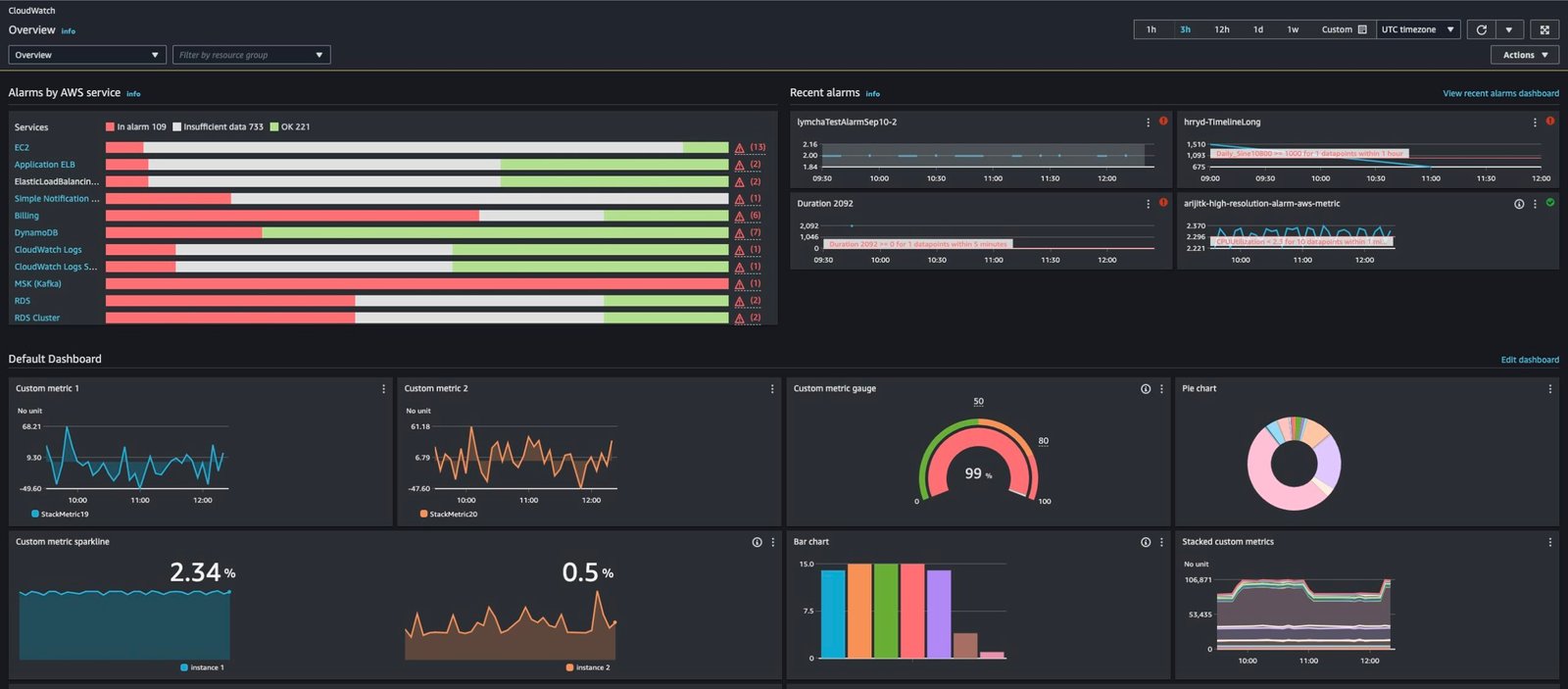As organizations increasingly rely on cloud infrastructure to operate their digital workloads, optimizing AWS monitoring has become a central concern for IT and DevOps teams. Monitoring is not just about tracking uptime; it encompasses advanced practices that ensure resources are utilized efficiently, applications are responsive, and any issues are addressed before they impact end users. This comprehensive guide provides practical strategies for enhancing AWS monitoring, ensuring that systems operate with precision and resilience. These strategies empower organizations to achieve higher service objectives, optimize resource allocation, and deliver superior digital experiences.
Understanding the Fundamentals of AWS Monitoring
AWS monitoring involves continuously observing cloud resources and workloads to gather health, performance, and security insights. Proper monitoring allows teams to collect and analyze metrics, logs, and events, supporting informed decision-making. Building foundational monitoring includes configuring alarms, leveraging built-in dashboards, and using external solutions for additional visibility, such as those highlighted by eginnovations.com. Effective monitoring delivers visibility into the computing, storage, and network environment, enabling teams to identify resource bottlenecks, track application behavior, and prioritize alerting for critical incidents. This approach reduces blind spots and allows for precise control over complex architectures. By embedding monitoring into all layers of the AWS infrastructure, organizations can maintain stringent compliance standards and minimize risks associated with undetected failures.
Identifying Critical Performance Metrics
The heart of effective AWS monitoring lies in identifying and tracking performance metrics, which provide actionable insights about how services and resources are performing. Standard monitoring metrics include CPU utilization, memory usage, disk I/O, and network throughput, each offering a window into system health. In addition, application-level metrics such as latency, error rates, and request counts shed light on end-user experiences. Proactively monitoring these metrics ensures capacity is right-sized for current and projected workloads. Thresholds and alarms based on these indicators can trigger notifications and automated responses, helping teams address issues before they escalate. Observing these metrics over time uncovers trends and enables predictive scaling, ensuring that only necessary resources are running, reducing risk and costs.
Harnessing the Power of Real-Time Analytics
Real-time analytics represent an indispensable component in AWS’s monitoring strategy. By collecting and processing data immediately as it is generated, organizations can react instantly to anomalies or spikes in usage. Real-time dashboards allow for seamless visualization, giving teams quick access to system status and enabling tactical decisions. This immediate feedback loop supports incident response workflows by highlighting issues before they affect broader operations. Real-time log analysis can detect security events, performance anomalies, or unauthorized changes, helping organizations maintain strict security postures. Furthermore, integrating real-time monitoring with automated alerting systems ensures swift triage and remediation, reducing the time spent diagnosing issues and minimizing the impact on users and business outcomes.
Leveraging Automation for Consistent Monitoring
Automation is a game-changer in managing the complexity and scale of AWS monitoring. Organizations can maintain comprehensive oversight without overwhelming IT teams by implementing automated detection and response mechanisms. Automated monitoring tools manage routine tasks such as log collection, threshold checks, and alerting, reducing manual workload and the potential for human error. Automation can extend to scaling actions, such as launching additional instances when CPU usage predicts a potential bottleneck or shutting down resources during periods of low demand to optimize cost. These practices ensure system reliability and efficiency regardless of scale. Additionally, automated remediation scripts enable rapid recovery from common incidents, freeing up engineers to focus on more complex issues while maintaining consistently high service levels.
Crafting an Effective AWS Monitoring Plan
Developing a structured AWS monitoring plan ensures resources are accurately tracked and aligned with organizational goals. The planning process starts with defining clear monitoring objectives linked to business requirements, such as uptime targets, compliance standards, and performance baselines. Selecting appropriate monitoring tools and frameworks allows teams to track infrastructure and applications efficiently. Establishing standardized alerting and escalation procedures ensures that critical incidents are addressed promptly. Periodic review and tuning of monitoring configurations is key to adjusting thresholds and refining automated responses as environments and business demands evolve. Documenting monitoring practices and response protocols supports ongoing improvement and provides valuable knowledge transfer across teams.
Continuous Optimization for Peak Performance
Optimization is not a one-time event but an ongoing process. Organizations can continuously analyze and monitor data to refine existing strategies, detect inefficiencies, and deploy enhancements. Reviewing weekly or monthly performance and usage reports helps ensure infrastructure remains right-sized, balances workload distributions, and aligns resource consumption with organizational targets. Integrating monitoring data with business analytics can unearth insights into customer interactions and application usage, supporting smarter business decisions. Regularly updating alert criteria, scaling rules, and log analysis scripts ensures flexibility and responsiveness as workloads change. Embracing continuous improvement practices in monitoring guarantees that performance targets are consistently met and exceeded, positioning the organization for long-term infrastructure excellence.
Conclusion
Optimizing AWS monitoring is pivotal for making informed operational decisions, maintaining high-performance systems, and delivering outstanding digital experiences. Organizations can establish comprehensive oversight of their cloud environments through foundational monitoring, strategic metric selection, real-time analytics, automation, careful planning, and ongoing optimization. Applying these strategies helps maintain cost efficiency, system reliability, and robust security standards. By ensuring that AWS monitoring is present and continuously refined, businesses maximize the value of their cloud investments and confidently support strategic growth initiatives.

